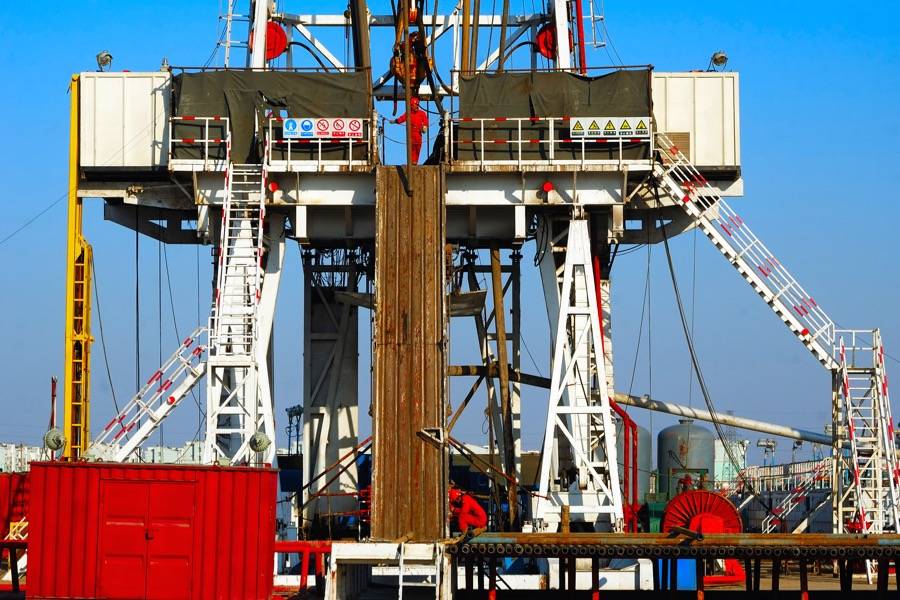Introduction:
This article seeks to offer an overview of the Well Examination Scheme, and answers common questions related to the topic.
Disclaimer: This article has not been written by a qualified well examiner. It’s not designed to offer any legal or practical advice in relation to carrying out well examinations. It’s an informational overview of the topic for those who are interested in getting a basic understanding.
The oil and gas industry is one of the most regulated industries, and with good reason. It’s extremely important that each person follows best practices, and that safety information is shared and made available to everyone.
What is the Operator’s Well Examination Scheme?
The Operator’s Well Examination Scheme was an initiative originally put in place in the United Kingdom by the Health and Safety Executive (HSE). The section that we’re interested in is the Department for Business, Energy & Industrial Strategy.
In essence, it’s an auditing and goal setting regime to ensure safety. Well examiners who are independent of the current and historic well team will follow a checklist and ensure safety compliance. Well examiners can be internal, i.e. part of the same oil company removed from the local situation (for example, flown in from another country). At other times, external independent specialist service companies are bought in to objectively perform the task.
In the UK, the HSE is an independent watchdog that monitors health and safety practices in the workplace. They also provide guidelines to all industries. The HSE states that all well operators need to commission assessments to verify the quality of work, and adherence to industry standards. This involves past and current performance as well as future goal-setting.
In addition to the UK regulations, as part of the European Union, operators working on the continental shelf must also adhere to EU rules. These directives are called the ‘Safety on Offshore Oil and Gas Operations’ and the list of guidelines includes a well examination protocol.
The main area of interest for oil and gas professionals is the North Sea and continental shelf, as well as the onshore oil and gas production areas of the UK. The O&G sector is designated as an area that has heightened potential risk and so it is covered in the Hazardous Installations Directorate (HID) issued by the HSE.
It’s the responsibility of every well operator to follow the rules and guidelines, plus incorporate them into their scheme of work template. The HSE provides plenty of information including well inspection guides. The ones that are relevant to us in this instance are the Inspection Guidelines.
The well inspection guidelines cover the HSE’s rules and determinations in relation to well examination arrangements and practices for all operators within the catchment area.
What does the Well Examination Assessment Template include?
Inside the written scheme of examination template, you’ll find a list of core principles to learn and internalise. These are the Assessment Principles for Offshore Safety Cases (APOSC).
Then, there are batches of questions that need to be answered at all stages of the lifecycle of a well.
The questions relate to:
- Design
- Modification
- Commissioning
- Construction
- Equipping
- Testing
- Operation
- Maintenance
- Workover
- Suspension
- Abandonment
In line with the current Offshore Installations and Wells legislation (SI 913, 1996), risk gaps can be identified, and performance scores allocated. It’s the responsibility of every well operator to put a well examination scheme in place, and then employ a competent well examiner to carry it out. It is also a legal responsibility to take action based on the findings. The HSE also have an Enforcement Management Model and contingencies.
From a practical point of view, pressure boundaries of wells need to be focussed upon, and containment equipment must be fully maintained and fit for purpose. The well examination will hone in on critical areas such as casing design, kick tolerance and the adequacy of well control equipment. Whilst much of the well examination relates to equipment such as wireline BOP’s, interviews and discussions with key personnel are involved. Historic operations reports will also be studied.
Whilst many of these papers, laws and guidelines are recent, the practices have evolved over the decades, refined according to technological advances.
Planning engineers need to be completely familiar with the current legislation and guidelines and then incorporate them into the well plan. All critical elements of a well will be examined from a safety standpoint. The results of the well examination scheme will be incorporated into the future work programme.
Once the actual well-work begins, the examination will be conducted and monitored by independent engineers of sufficient competency. Ongoing operations are monitored at frequent intervals to ensure compliance, and allow adjustment based on new feedback from the well.
Regular well examinations will take place and findings will be cross referenced with the programme and operation in general. A verification management system will identify areas where the data shows potential risk, then changes must be implemented. All of these things must be managed and documented.
Doesn’t the industry have its own best practices?
In any capitalist industry endeavour, the profit motive is near the front of management thinking. Without adequate safety practices, and practical guidelines, standards may be compromised.
Each operator has its own set of rules and regulations, but the integrity of a well is so important, that governments and NGO’s also have an active involvement. It’s in the interest of the general public, and important lessons can be shared by all operator’s. An important finding, or mistake need only be discovered once, rather than by each operator one by one.
So rather than an either/or situation, we have the ultimate in knowledge sharing and best practice refinement.
Why are scheme of work templates such as these important?
We’ve covered a few of the reasons already, but to be clear, here’s a quick round up:
– Preventing the loss of human life is always top of the list. A loss of well control compounds the possibility of a fatality and must be avoided.
– Uncontrolled leaks have environmental implications and threaten animal life and degradation of the ecosystem. We must be completely vigilant in our attempts to prevent this from happening. Public outrage and litigation costs present social economic, and existential issues for individual companies, and the industry at large.
– Wells that go out of control result in a loss of revenue. Even a temporary shut-down can create huge economic strain on a capital-intensive operation. With unknown future oil prices, marginal profits can turn into significant losses. Unnecessary workovers and repairs all add to spiralling costs.
Other relevant papers and guidelines:
The HSE have also produced guidelines and best practices relating to the prevention of fire and explosion, and emergency response on offshore installations (PFEER).
These documents are a precursor to, but also compliment the well examination scheme. We’d like to think that with a robust well design plan, and careful checks for compliance that this is all that would be needed.
The PFEER guidelines are also needed to ensure that everyone is crystal clear on what could happen, fully prepared for the worse case scenarios.
The ALARP principle (as low as reasonably practicable) is a cornerstone of the legislation mentioned on this page. Anyone studying to be a well examiner needs to learn about this.
Important documents for well examiners include:
- Offshore Installations (Offshore Safety Directive) Regulations 2015 (SCR 2015)
- EU Directive 2013/30/EU
- Offshore Installations and Wells (Design and Construction, etc) Regulations 1996 (DCR)
- Offshore Installations (Safety Case) Regulations 2005 (SCR 2005)
- Borehole Sites and Operations Regulations 1995 (BSOR)
Note: Are you a qualified well examiner? If you notice something missing, outdated, or incorrect, please comment below, or contact us so that we can improve this article for everyone who sees it in the future.









Would make the following 4 quick comments on your article:
ITEM 1 – In essence, it’s an auditing and goal setting regime to ensure safety. Well examiners who are independent of the current and historic well team will follow a checklist and ensure safety compliance.
1) COMMENT :
I hope he does more than follow a “check-list” if he works in the UK. The application of Good Engineering Practice and Engineering Judgment is required in the Goal Setting Regime the UK has adopted. You do talk about Best Practices, just after Good Practice.
ITEM 2 – Well examiners can be internal, i.e. part of the same oil company removed from the local situation (for example, flown in from another country).
2) COMMENT:
Any Well Examiner working for the same company needs to be very careful. The Royal Academy of Engineering and the UK Government agree they must be 3rd party. The UK HSE had another opinion :
https://www.raeng.org.uk/publications/reports/shale-gas-extraction-in-the-uk
ITEM 3 : Inside the written scheme of examination template, you’ll find a list of core principles to learn and internalise. These are the Assessment Principles for Offshore Safety Cases (APOSC).
3) COMMENT – Be very careful when using this document (APOSC), many of the references are 20 years out of date. If you want another poor HSE document, have a look at this link (GASCET) on Wells
https://webcommunities.hse.gov.uk/connect.ti/gascet/viewCompoundDoc?docid=62036&sessionid=&voteid=&partId=79764
ITEM 4 – The ALARP principle (as low as reasonably practicable) is a cornerstone of the legislation mentioned on this page. Anyone studying to be a well examiner needs to learn about this
4) COMMENTS – Fully agree with this statement, but how many Well Examiner understand terms like IRPA, PLL , ICAF, TRIF,F/N? Not a great fan of these values, but you need to understand them and the uncertainty associated with them, when demonstrating the risk to offshore personnel are ALARP (RSP).
Hi Iain, Thank you so much for the clarifications that you’ve added here, I appreciate it. Future readers can also benefit from the additional links that you’ve supplied.